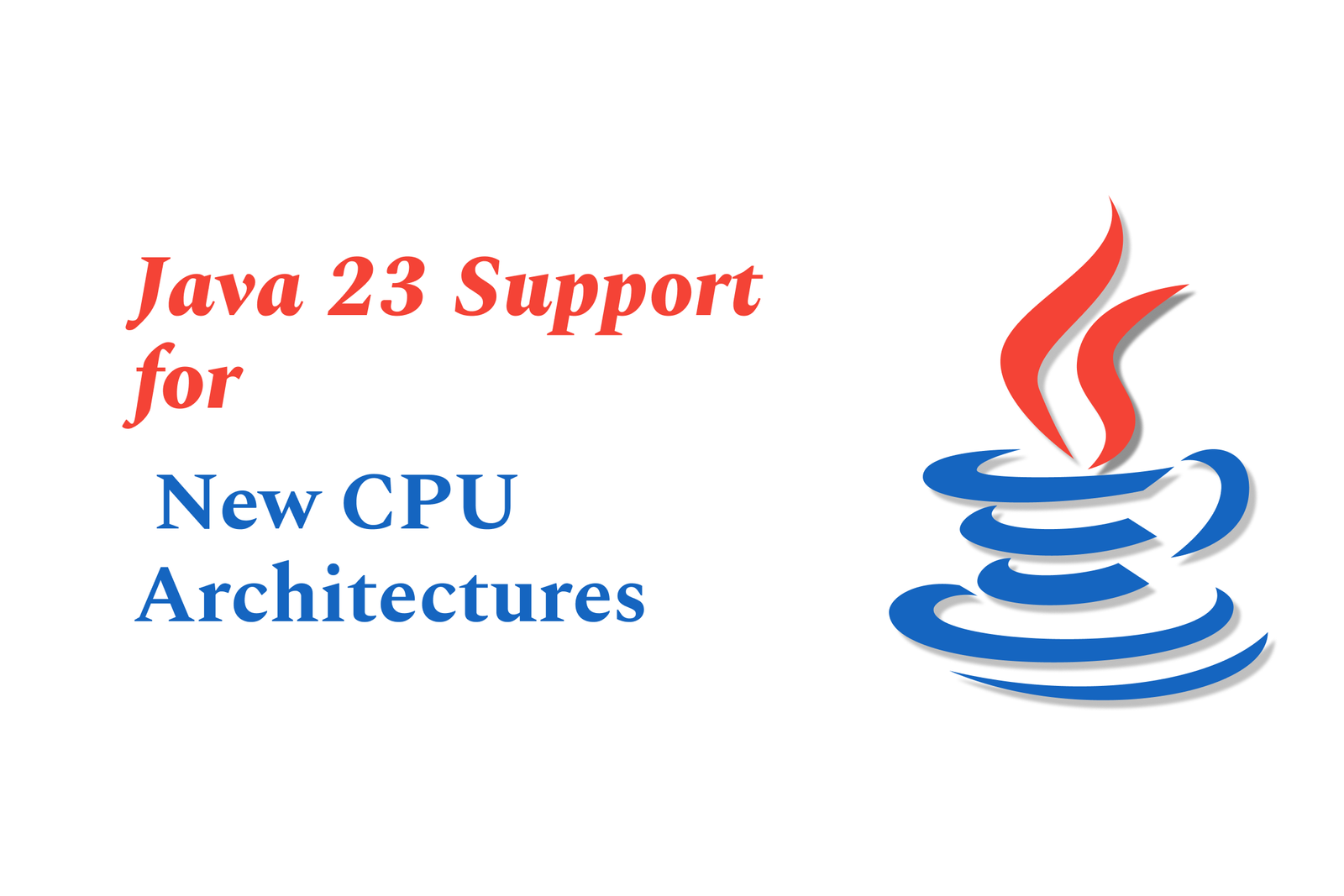Java 23 Support For New CPU Architectures
Java 23 introduces enhanced support for new CPU architectures by improving SIMD and SIMT capabilities, enabling better utilization of modern multi-core CPUs and GPUs. This boosts performance for parallel workloads, making Java optimal for AI, machine learning, and high-performance computing.
Java 23 Support for New CPU Architectures
1 ) Introduction to Java Evolution for Parallel Architectures
Java has long been essential in enterprise development, known for reliability and portability. With rising demands in machine learning and data intensive workloads, Java is advancing to optimize parallel processing on modern CPUs and GPUs. This evolution aims to enable developers to build high performance, scalable applications leveraging new hardware capabilities.
2 ) Fundamental Programming and Execution Models
Programming Model: Defines how code is written and structured, including models like Sequential, Concurrent, and Parallel (task or data based).
Execution Model: Specifies how instructions run on hardware, including:
SISD (Single Instruction, Single Data) – traditional single core CPUs
MIMD (Multiple Instruction, Multiple Data) – multi core CPUs
SIMD (Single Instruction, Multiple Data) – vector processors
SIMT (Single Instruction, Multiple Threads) – GPU threading model
SIMD and SIMT are crucial for parallelism in machine learning, enabling simultaneous processing of multiple data points for significantly improved throughput.
3 ) Details on SIMD and SIMT Models
SIMD involves executing identical operations across multiple data elements simultaneously using vectorized instructions (e.g., Intel's SSE and AVX). Modern JVMs like HotSpot JIT can automatically optimize code loops into SIMD instructions for performance gains.
SIMT, used in GPUs, schedules thousands of threads performing the same instruction on different data, organized into warps or wavefronts, facilitating massive parallelism and latency hiding, ideal for data driven computations.
4 ) Java Platform’s Advances to Harness Parallelism
Java is incorporating support for SIMD and SIMT through enhancements in its runtime and APIs, enabling better use of heterogeneous hardware (CPUs and GPUs). These improvements help developers to efficiently implement data parallel algorithms, boosting performance for AI, ML, and HPC applications.
5 ) Panama Vector API and Java 23 Enhancements
A key development is the Panama Vector API which allows Java code to express vector computations that map directly to hardware SIMD instructions. Java 23 continues to improve such features, making it easier to write optimized parallel code portable across architectures. These advancements reflect Java’s commitment to embracing new CPU architectures fully and delivering modern high performance capabilities.
Summary: Java 23 strengthens support for emerging CPU and GPU architectures by enhancing parallel programming and execution models. Leveraging SIMD and SIMT with APIs like Panama Vector API, Java facilitates fully optimized, high throughput data processing vital for AI and parallel computing demands. This positions Java as a robust choice for next generation, performance intensive applications on heterogeneous hardware.
https://justacademy.in/news-detail/new-react-native-cli-features-developers-must-know
https://justacademy.in/news-detail/react-native-2025:-what-meta?s-big-push-means-for-developers
https://justacademy.in/news-detail/how-react-native-is-redefining-mobile-app-ux
https://justacademy.in/news-detail/dart-pub-trends-in-2025
https://justacademy.in/news-detail/best-new-android-apps-released-this-month
Related Posts
In 2025, top Angular libraries offer modern, feature-rich components and tools for building dynamic web apps. From powerful data grids to low-code platforms like UI Bakery, these libraries enhance development speed, UI design, and scalability, making them essential for Angular developers.
Migrating from AngularJS to Angular 17 involves gradually upgrading your app by running both frameworks together using tools like ngUpgrade, rewriting components in TypeScript, and adopting Angular’s modern architecture to enhance performance, maintainability, and long-term support.
Angular state management tools help organize and handle app data efficiently, improving scalability and maintainability. Popular options include NgRx for robust, RxJS-based patterns, and newer Signal Store solutions that offer simpler, reactive approaches integrated tightly with Angular’s latest features.
RxJS in Angular empowers developers to manage asynchronous data streams with powerful operators like `forkJoin`, `combineLatest`, and `zip`. Mastering these key operators in 2025 is essential for building efficient, reactive applications that handle complex event sequences seamlessly.
Angular performance optimization in 2025 focuses on improving app speed and responsiveness by using techniques like OnPush change detection, lazy loading, efficient data caching, and AOT compilation. These practices reduce load times, enhance user experience, and ensure scalable, fast Angular applications.
In 2025, Angular remains preferred for large-scale, enterprise apps with its robust, all-in-one framework, while Vue attracts developers seeking simplicity and fast development for smaller projects. Both frameworks excel, with choice driven by project needs and team expertise.
Angular Signals are a new reactive primitive in Angular 16 that enable fine-grained, efficient change detection by automatically tracking dependencies and updating only affected parts of the UI. They simplify state management and boost app performance, revolutionizing Angular's reactivity model.
Angular interview questions to prepare in 2025 focus on core concepts like components, directives, data binding, routing, and dependency injection, along with TypeScript mastery and latest Angular features to ensure strong practical knowledge for building scalable, efficient web applications.
AngularJS reached its official end of support in January 2022, meaning no further updates or security patches. To ensure app security and performance, developers should consider migrating to modern Angular versions or seek third-party long-term support options if immediate migration isn’t possible.
The Angular Roadmap 2025 highlights upcoming features focused on improving developer experience and performance, including zoneless Angular, Signals integration, enhanced Forms, async data handling, improved HMR, and expanded Angular Material/CDK enhancements, driving modern, efficient web app development.










